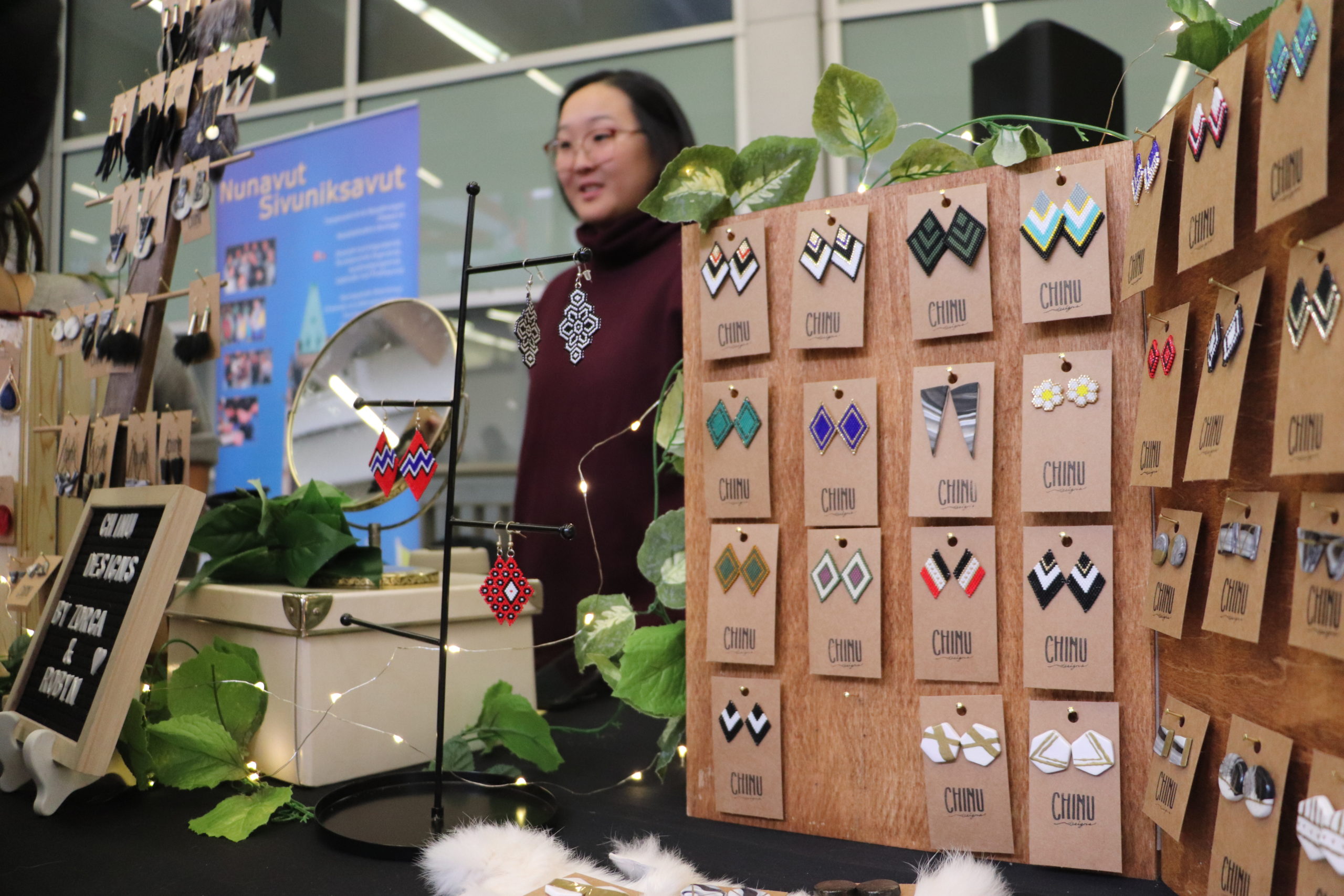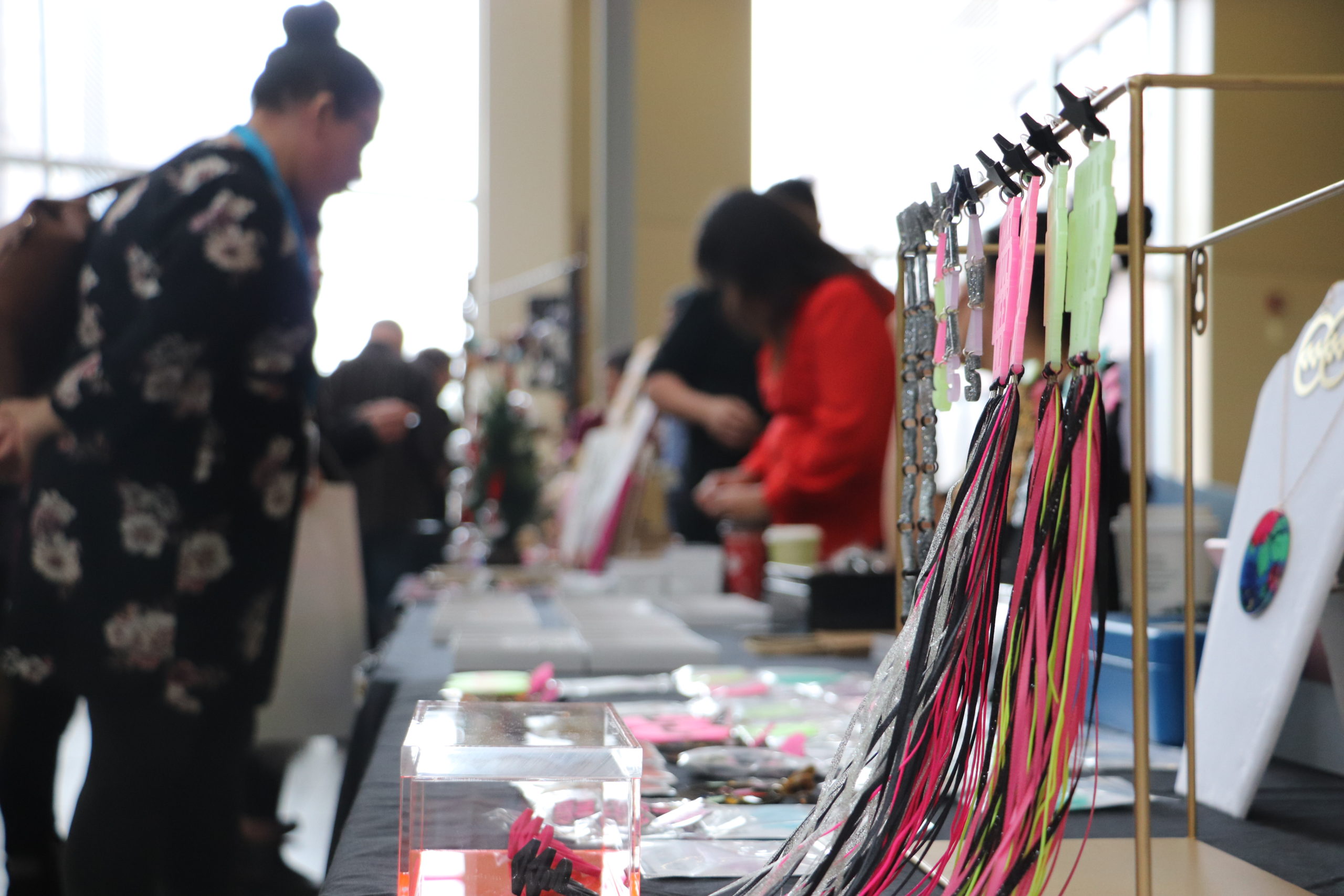Indigenous vendors gathered at Carleton on Thursday, selling artisan goods ranging from beaded and fur jewelry to scented soaps and candles, in the University Centre atrium.
The Centre for Indigenous Initiatives’s first Indigenous Winter Market featured pieces which all had roots in traditional Indigenous craftsmanship, said Benny Michaud, who is responsible for the Centre for Indigenous Initiatives.

“All of our vendors are Indigenous people, and many of the things that are being sold are a wide range of traditional art forms.”
Through events like these, Carleton is able to strengthen the relationship it has with Indigenous communities, said Michaud.
“It fits really well into a number of calls to action that have just recently been released from the Carleton University Indigenous Strategic Initiatives committee, which is really going to be a guiding document at Carleton regarding how we move forward with Indigenous initiatives.”
Indigenous markets, which have seen a surge in popularity in recent years, appeal to a broad range of clientele due to the “unique spin” that catering primarily to Indigenous vendors puts on the events, said Kyle Simon, a third-year environmental studies student and Anishinaabe woodland artist.
“These events allow Indigenous people to come out, sell our work, and ultimately shed light on who we are as people,” he said.
“We are part of this community and we want to be valued and celebrated. These markets allow us the opportunity to come out share who we are through our products.”
For many within the Indigenous community, these markets also serve as fundraising opportunities to support not-for-profit initiatives.
Zorga Qaunaq, an administrator at Nunavut Sivuniksavut—a post-secondary program at Algonquin College aimed at educating Inuit youth on matters pertaining to their community and the building of Nunavut—said the Indigenous Winter Market gives her students the opportunity to sell their artwork in order to support their education.
“The students go on a year-end international cultural exchange trip, which will cost about $80,000, so they need to raise it throughout the year,” she said.
“Outside of their class time, they’ll be working on things to raise money for that. One thing we started a few years ago was a t-shirt design contest amongst the students, and then we said we would print them off onto t-shirts and hoodies for them—then they started going to markets and selling them, and it’s been growing and growing ever since.”
While accompanying her students at these markets, Qaunaq and her business partner, Robyn Mo-Lian, decided to open stalls dedicated to their company, Chinu Designs.
“The purpose of these markets is to educate non-Indigenous people so they can know more and appreciate Indigenous art, since this is how a lot of Indigenous people make a living,” said Mo-Lian.
“Art translates into other social issues, like cultural respect, and so having these booths sort of creates an awareness that ties in with Nunavut Sivuniksavut’s mission.”
Benjamin Estwick, a fourth-year law student, said he was taken aback by the difference in energy he felt at the Indigenous Winter Market compared to the standard Christmas markets he frequents while studying in Europe.
“The energy and vibrant culture is much different than a Christmas market, which is very flashy and more ‘Buy, buy, buy,’ whereas here, that’s more subtle,” he said.
“I’m definitely really drawn to the items that really express each person’s culture, too,” Estwick added.
“There’s some things you can get anywhere, but things like the fur mittens, the handmade stuff—they’re such unique items, and they make the experience of an Indigenous market so different.”
Featured image by Pascale Malenfant.






